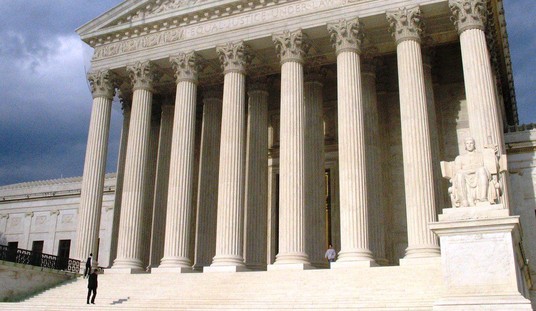There’s an interesting debate unfolding over at the Duke Center for Firearms Law, part of Duke University’s law school. It started with a post from Duke law professor Jake Charles last week talking about the “text, history, and tradition” test for determining the constitutionality of gun laws; a test that’s rarely been adopted by lower courts since the Heller decision, but one that many Supreme Court-watchers anticipate will be used when the Court releases its opinion in New York State Rifle & Pistol Association v. Bruen in a few weeks.
Charles tries to make the case that, even if the Court does adopt that test and rejects the two-step inquiry involving tiered scrutiny (intermediate scrutiny being used far more often than “strict scrutiny” by most judges post-Heller), many gun control restrictions that don’t have historical analogues could still be found constitutionally sound, including the new rules on home-built guns released by the ATF a few weeks ago.
In my view these kinds of historical analyses, as interesting and useful as they might be for understanding past practices and tracing changes in firearms technology, shed little light on a fundamental question of constitution law: what are the limits on the government’s regulatory power. That’s because much of this style of argument—and indeed the conceit of the THT test in general—is to transform nonregulation into a right. For these advocates, the existence of some unregulated practice in the past is not ambiguous evidence about the status of government power, but a sign that the practice was protected as a right, at least when it comes to guns. That can’t be true.
Both historically and today, government (local, state, and federal) has lots of power to regulate conduct that it declines to exercise. Maybe, for any given circumstance, it has the power to regulate, but lacks political will to do so. Or has the power, but thinks it would be bad public policy. Or sees no problems in the current environment that requires regulation but might turn to it in the future. In other words, discovering that historical practice X was not regulated cannot alone tell us whether (a) the government lacked the power to regulate because X is a protected right or (b) the government chose for other reasons altogether not to regulate X. THT and arguments like those about self-made guns imply that government always regulates to the outer limits of its power. Thus, if conduct remained unregulated, then it was protected. But this inexplicably erases a whole category of regulable and yet not regulated behavior. If historical argument is going to take a prominent place in Second Amendment analysis, it ought to be based on evidence of widespread understanding that a past practice was protected as a right, not simply that it existed without regulation.
Now Second Amendment attorney and scholar Joseph Greenlee has responded to Charles’ column with one of his own, where he explains why a “THT test” would protect the right to build your own gun at home.
Now that self-made arms are a hot-button issue, further investigation by more able scholars will undoubtedly uncover additional history. Nevertheless, there is already sufficient evidence to conduct a THT analysis. Here is an abbreviated version: the Second Amendment’s text protects the right to keep arms. One must be able to acquire something to keep it, and the most fundamental way to acquire something is to produce it oneself—indeed, it would be strange to mandate that people purchase from others something that they have a right to own and can produce themselves. Therefore, the text seemingly protects the building of personal arms. History and tradition support this interpretation: building arms for personal use was common throughout American history and never regulated. Further, Americans depended on domestic manufacture during the Revolutionary War, and it is unlikely that immediately thereafter they granted the government the power to severely restrict domestic manufacture. As for the government requiring that homemade firearms be marked for identification, it evokes the Founders’ experience throughout the 1770s, when identifying marks were intentionally omitted from guns so that the tyrannical British—who had already prohibited the import of firearms and gunpowder and confiscated Americans’ stores of arms—could not find and retaliate against domestic gunmakers. The Founders recognized the dangers of government being able to trace every single arm—even those that never exchange hands.
As for Charles’ argument that the absence of a law doesn’t indicate the presence of a right, Greenlee says that using a “text, history, and tradition” test provides clear evidence that bans on homemade guns have never been a part of firearms regulation in this country.
Professor Charles mistakenly asserts that “THT and arguments like those about self-made guns imply that government always regulates to the outer limits of its power.” To the contrary, THT analyzes centuries of history to see how many governments (local, state, or federal) ever extended their power during that time to the extent the government currently being challenged has.
He concludes that “[i]f historical argument is going to take a prominent place in Second Amendment analysis, it ought to be based on evidence of widespread understanding that a past practice was protected as a right, not simply that it existed without regulation.” Placing the burden on the people to prove the existence of their constitutional rights fails to appreciate the nature of the United States government. As James Wilson famously declared while discussing a bill of rights during the constitutional debates, “the congressional authority is to be collected, not from tacit implication, but from the positive grant expressed in the instrument of union. Hence it is evident, that . . . every thing which is not given, is reserved.” Presumptions favor liberty, not governmental authority.
Moreover, there are over 300,000 federal crimes—so many, in fact, that the Department of Justice is unable to count them. The number of state and local laws throughout American history are countless as well. It is reasonable to infer that there must be a reason why none of these hundreds of thousands of laws has touched upon a common practice—especially when the activity is associated with a constitutional right.
With the ATF’s new regulations on home-built guns expected to be challenged in court before they go into effect in August and blue states and cities imposing “ghost gun” bans of their own , this isn’t a theoretical debate. If the Supreme Court doesn’t agree on adopting a “text, history, and tradition” test as the proper standard of review in determining the constitutionality of gun control laws when it delivers its opinion in Bruen, however, many lower courts will continue to use that flawed two-step process of tiered scrutiny to uphold these bans, regardless of what history and the text of the Constitution tell us about the right not only to keep and bear, but to acquire arms… including the ability of law-abiding citizens to build our own without governmental supervision or approval.









Join the conversation as a VIP Member